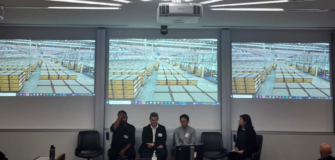Modern supply chain operations are quite complex, and as a business owner, you need every little help you can get to manage them efficiently. A business that delivers goods promptly and makes its customers happy is likely to stand out among the competitors.
As a part of managing the supply chain operations, we can use data analytics. The key to building a strong supply chain is to take a data-driven approach, which is more efficient, resilient, and adaptable to changing business conditions.
However, many businesses are still unaware of data analytics, let alone its importance and the benefits it can provide them. If you are one such business owner seeking answers about data-driven approaches for businesses, you have come to the right place. Today, we will discuss what exactly is data analytics in the supply chain, along with how to use it to optimise your operations. So let’s get started.
The Importance of Data Analytics in Supply Chain Operations
Let us begin by defining what supply chain analytics is. Data analysis is simply the process of analysing information using different software tools and programs installed in computers. For the supply chain, this information can be supplier data, customer data, inventory levels, and transportation costs.
As for the analysis part, our goal is to find ways to reduce costs, improve delivery times, optimise inventory, and maintain quality. To do this analysis, we need a large number of data from different resources such as procurement, inventory, coordination of orders, warehouses, and shipping. As so many moving parts are simultaneously involved, it is crucial to keep track of everything.
The following benefits can be achieved in supply chains through data analytics:
● Streamline operations
● Manage inventories more effectively
● Track shipments more effectively
● Cost-savings
● Eliminate bottlenecks by identifying them
● Ensure minimal downtime for machinery
Using Data to Optimise Your Supply Chain Management
Now comes the main part: how do we use this data to optimise our supply chain management operations? Well, here are 9 ways to do this.
1. Create a data-driven Culture
For an organisation to convert to a data-driven approach, a cultural change is required. The leadership must view data as valuable, increase awareness of what it means to be data-driven and develop a comprehensive strategy that is well communicated throughout the organisation.
You can organise seminars and training sessions for new employees to show them how your organisation will use data for daily operations, along with the tools and software that will be used.
2. Collect Data and Start Integrating it
As a part of your approach to a data-driven culture, you must start collecting data from different resources within your organisation. The data to collect may include inventory levels, lead times, production schedules, transportation costs, and customer demand.
Afterwards, use the latest software and computer tools to group the data for analysis and improvements it requires. Talking about tools, we have something to share with you. If you are a new business owner and looking for a unique name, check out the business name generator.
3. Identify Key Performance Metrics to Track
Once you are done with the collection of data and its integration, you should identify the key performance indicators (KPIs) to measure the efficiency of your supply chain. These KPIs can be manufacturing downtime, labour costs, on-time delivery, inventory turnover, and fulfilment rates.
Evaluate them continuously over time to evaluate your progress of what you have achieved so far through a data-driven approach.
4. Monitoring of Data in Real-time
Use real-time monitoring systems to track your movement of goods and identify any bottleneck issues that are present. If you find any such issues respond to them as soon as possible. By doing so, you can take measures to deal with disruptions that cause delays in operations.
5. Accurately Forecasting Demand
One of the biggest challenges faced by modern supply chains is the rapid change in customer demands. Ordinarily, action is taken in response to demand. With demands changing more rapidly than ever, this can result in wastage or failure to fulfil orders.
An effective data-driven supply chain management method relies on advanced analytics, which provides accurate forecasting of demand and assists in controlling stock levels.
6. Taking Steps to Reduce Risk
It is a common phenomenon that disruptions occur, and they will continue to do so. Rather than waiting for a disaster to occur, it is more prudent to utilise a mechanism that is based on data-driven decision-making. The application of technologies such as artificial intelligence and advanced analytics can assist in analysing data models and predicting disruptions.
Supply chain leaders must prepare in advance for disruptions so they can prepare a risk management mechanism to reduce the impact they may have.
7. Quality Control:
There is often a need to handle temperature-sensitive materials within supply chains. Taking into account factors such as temperature, pressure, and precipitation is particularly important in food supply chains.
You can determine the exact cause of spillage or damage to products using data-based analysis. When you are aware of the precise causes of quality damage, you can take steps to improve it.
8. Protecting Sensitive Data
As a part of supply chain data analytics, you must use the latest security measures to protect sensitive data in your supply chain. Hire an ethical hacker who can analyse your entire system and identify weak points that can cause security breaches. He or she can devise a strategy to protect the system.
9. Supplier and Partner Collaboration
It can be helpful to share data and insights as a means of developing strategies that aim at increasing the efficiency of the supply chain and developing innovative new products and services.
The key to tackling disruptions and preventing outages is data-driven supply chain management. We hope you have found these strategies for optimising your supply chain helpful. If you still haven’t utilised a data-driven approach for your supply chain, then do so now! It’s never too late.


















































Follow us on social media